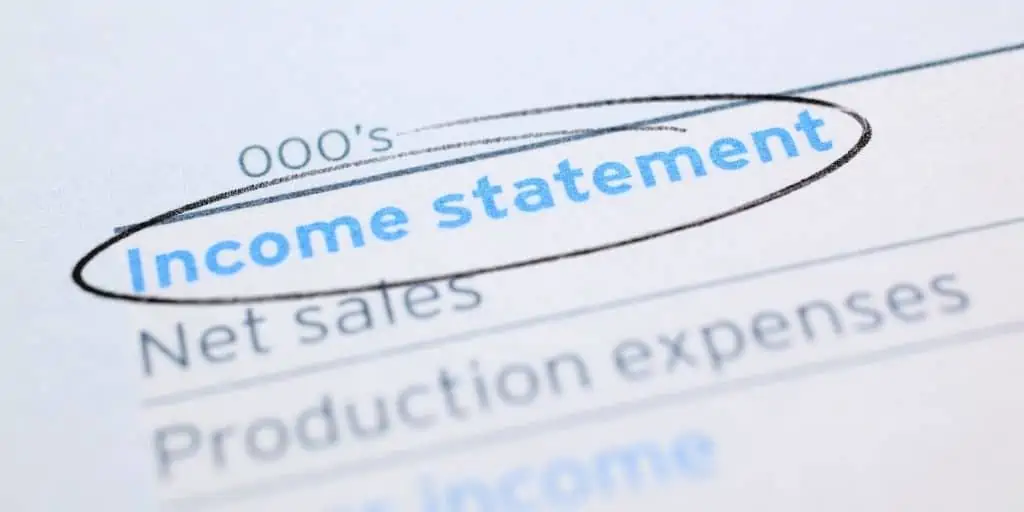What Is a Trailing 12 Month Financial Statement (Trailing 12)?
REtipster does not provide tax, investment, or financial advice. Always seek the help of a licensed financial professional before taking action.
What Does T12 Refer To?
T12, Trailing 12 or a trailing 12-month financial statement is a report that presents a company’s up-to-date financial data in an annualized format. This makes it easier to generate current financial figures at any point in the year. T12 is also referred to as the Last Twelve Months or LTM.
T12 figures are the most current annualized financial data for an organization. Analysts find T12 data helpful in accounting for seasonality effects[1] in a company’s financial statements.
To measure growth and identify opportunities, investors and analysts can compare the most recent T12 report against the previous. For example, if the current T12 figures show that the company’s revenue has increased by 30% compared to the previous T12, it shows that the company is growing[2].
Trailing 12-month financials can be pulled from various sources, such as the company’s income statement, balance sheet, and cash flow statement, depending on the purpose of the T12. An analyst must define the report’s purpose and ascertain where to pull the data from before compiling a T12.
Why Is T12 Important?
Since annualized T12 figures are more current than the figures from the last fiscal year, they are often the most up-to-date and relevant set of important when reviewing past performance and making strategic decisions.
They are also less volatile when compared to quarterly figures. For instance, if an investor wants to estimate the full-year financials of a company, it makes no sense to take the figures from a single quarter and multiply it by four. Doing so misrepresents the numbers; what if the company sells holiday-themed products?
T12 numbers provide a fairer representation because they account for a more comprehensive look at financial data, including the quarters that experienced low sales.
Annualized financial numbers also provide investors and analysts with a full year’s worth of financial data without waiting for the company’s calendar year to end. Companies usually publish their financial reports at the end of the fiscal year, but financial analysts who cannot wait that long can perform a T12 analysis instead.
T12 in Finance
Because T12 summarizes financial data in an annualized format, its information may present a clearer picture of an organization’s current financial state. In addition, short-term abnormalities in financial results, such as temporary dips in demand or large one-time expenses, generally become smoothed over in the final report since T12 accounts for the last 12 months and not the fiscal year.
Up-to-date information is also essential in financial forecasting[3]. This fiscal management tool utilizes current data to estimate future financial conditions.
T12 in Real Estate
In real estate, T12 looks at the financial activity of a property over the last 12 months of its operation. It is generally used for multifamily properties and apartment buildings, as well as some commercial rental properties with lease periods of up to 12 months.
The T12 summarizes the economic performance of the property into a single statement. It typically contains information regarding rental income, utility charge-backs, expenses, concessions, and more over the past twelve months.
Interested parties can interpret T12 data based on their role in real estate.
For example, investors need T12 figures because it gives them up-to-date financial data that helps them decide whether the property is worth investing in.
On the other hand, lenders will often request a T12 for the property when evaluating borrowers for apartment property financing. For borrowers looking to purchase the property, lenders usually request the T12 report and rent roll documentation. Alternatively, some lenders may instead request a T3, which is simply the financial data of the property over the last three months[4].
How to Calculate T12
T12 reports come from three primary sources—cash flow statements, income statements, and balance sheets. Each has its discrete T12 calculation method.
Using the Cash Flow Statement
Cash flow measures the cash (and equivalents) flowing in and out of an entity over a given period[5]. Calculating T12 using this data source involves summing up the monthly cash flow figures for the past 12 months.
Using the Income Statement
The income statement contains information about the revenue and expenses of an organization over a given period[6]. A detailed statement shows gross income, pretax income, operating income, and net income. Using this source, generating the T12 involves adding the values in the monthly income statement—revenue, expenses, profits, etc.—for the last 12 months.
If the company has just released an annual report, the values on the T12 should be the same as those on the annual income statement.
Using the Balance Sheet
The balance sheet shows the company’s financial position at a particular moment in time[7]. These include information about assets, liabilities, and shareholders’ equity.
Because the data presented only reflects a single point in time, there is no practical way to get data for the most recent consecutive 12 months from the balance sheet. Instead, the T12 is calculated using the values from the most recent balance sheet.
Pros and Cons of Using T12
Using T12 data has its own pros and cons.
Pros
- The report provides visibility into the organization’s most recent 12-month financial performance.
- It helps company management make strategic decisions to improve financial performance.
- It helps investors and lenders evaluate a company or real estate property more accurately.
Cons
- Generating a T12 can be tedious because it means tracking and analyzing monthly or quarterly financial information over the last 12 months.
- Companies operating volatile businesses might find little use for T12 since the values of their financial data may change rapidly.
Takeaways
- T12, trailing twelve months financials, or last twelve months is a report that portrays the financial performance of an organization or asset over the last 12 consecutive months. The 12 months measured do not necessarily have to coincide with the end of the entity’s fiscal year.
- Using T12 provides insight into the current financial health of a business or, in real estate, an investment property.
- There are three primary data sources for T12 reports—balance sheet, income statement, and cash flow statement.
Sources
- Dickov, D. (2020). Introduction to Seasonality in Financial Analysis and Modeling. Medium. Retrieved from https://medium.com/magnimetrics/introduction-to-seasonality-in-financial-analysis-and-modeling-f59a0100162c
- Corporate Finance Institute. (n.d.) What is Fundamental Analysis? Retrieved from https://corporatefinanceinstitute.com/resources/knowledge/trading-investing/fundamental-analysis/
- Government Finance Officers Association. (n.d.) Financial Forecasting in the Budget Preparation Process. Retrieved from https://www.gfoa.org/materials/financial-forecasting-in-the-budget-preparation-process
- Commercial Real Estate Loans. (2018). T3: Trailing Three Months in Commercial Real Estate. Retrieved from https://www.commercialrealestate.loans/commercial-real-estate-glossary/t3-trailing-three-months
- Leibold, K and Hofstrand, D. (2016). Understanding Cash Flow Analysis. Iowa State University. Retrieved from https://www.extension.iastate.edu/agdm/wholefarm/html/c3-14.html
- Stobierski, T. (2020). HOW TO READ & UNDERSTAND AN INCOME STATEMENT. Harvard Business School. Retrieved from https://online.hbs.edu/blog/post/income-statement-analysis
- AccountingTools. (2022). Balance Sheet Definition. Retrieved from https://www.accountingtools.com/articles/balance-sheet









